![[Translate to en-CH:] [Translate to en-CH:]](/fileadmin/_processed_/1/f/csm_IMP_GB2020_210005-14_spa_1a6f31d4ab.jpg)
[Translate to en-CH:]
[Translate to en-CH:]
Insight: Expertise in complex infrastructure
For over 100 years, Implenia has specialised in technically and logistically challenging infrastructure projects. It continues to build on this expertise systematically with new tools like BIM and Lean.
Berlin has witnessed a lot. But this construction site right in the middle of town was quite special. A 28,000 m3 iceberg underneath the Spree Canal? The U5 Lückenschluss (“gap closure”) project was not only one of the German capital’s biggest transport infrastructure projects, but also one of the most spectacular.
The extension of the U5 metro line from Alexanderplatz to Brandenburger Tor took 9 years and involved building 2.2 km of tunnel and three new U-Bahn stations. Implenia was responsible for the construction of two parallel tunnels, each 1.7 km long, as well as a track switching system and the core and shell build for two stations. The most complicated element, the Museumsinsel U-Bahn station, was created last of all. Some of the specific challenges were obvious. The planned U-Bahn station lay directly below the Spree Canal and the listed Schlossbrücke bridge, and very close to the historic Bertelsmann Building. Open trench construction was out of the question. Then came the fact that Berlin is built on sand. Peter Hoppe, Project Manager: “If you’ve ever tried to dig a hole on the beach, you’ll know how quickly the water can run in. The situation is similar in Berlin where we have groundwater just two metres below the surface. But we had to go down 45 metres.”
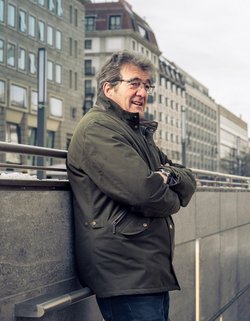
“The drilling has to be extremely precise. There aren’t many with the skills to do it properly.”
Peter Hoppe
Project Manager U5 Berlin
The solution was to carry out the largest ground freezing ever attempted in a European city. Implenia’s team of special foundations experts drilled 65 individual bore holes and filled them with ultra-cold (-40C) brine to freeze the subsurface. Protected by the frozen block that was created, the team could then build the platform area and the station concourse. “Horizontal drilling to this level of precision is one of Implenia’s real areas of expertise. It requires specialist skills that only a few can offer,” explains Peter Hoppe. “Down the entire 105 m length of the 17 cm-diameter bores we could only afford a maximum deviation of 50 cm. We’re very proud of the achievement.” While the Spree flowed freely above, winter reigned 30 metres below, where the work continued apace. After four months, the tunnellers had completed their work on the central shaft. Drilling and lining the side shafts took another four months. On 4 December 2020, which happens to be the day of St. Barbara, patron saint of miners and tunnellers, the first U-Bahn train passed through the station. The official opening of Museumsinsel station, designed by Swiss architect Max Dudler with an impressive ceiling of LED stars, is scheduled for summer 2021.
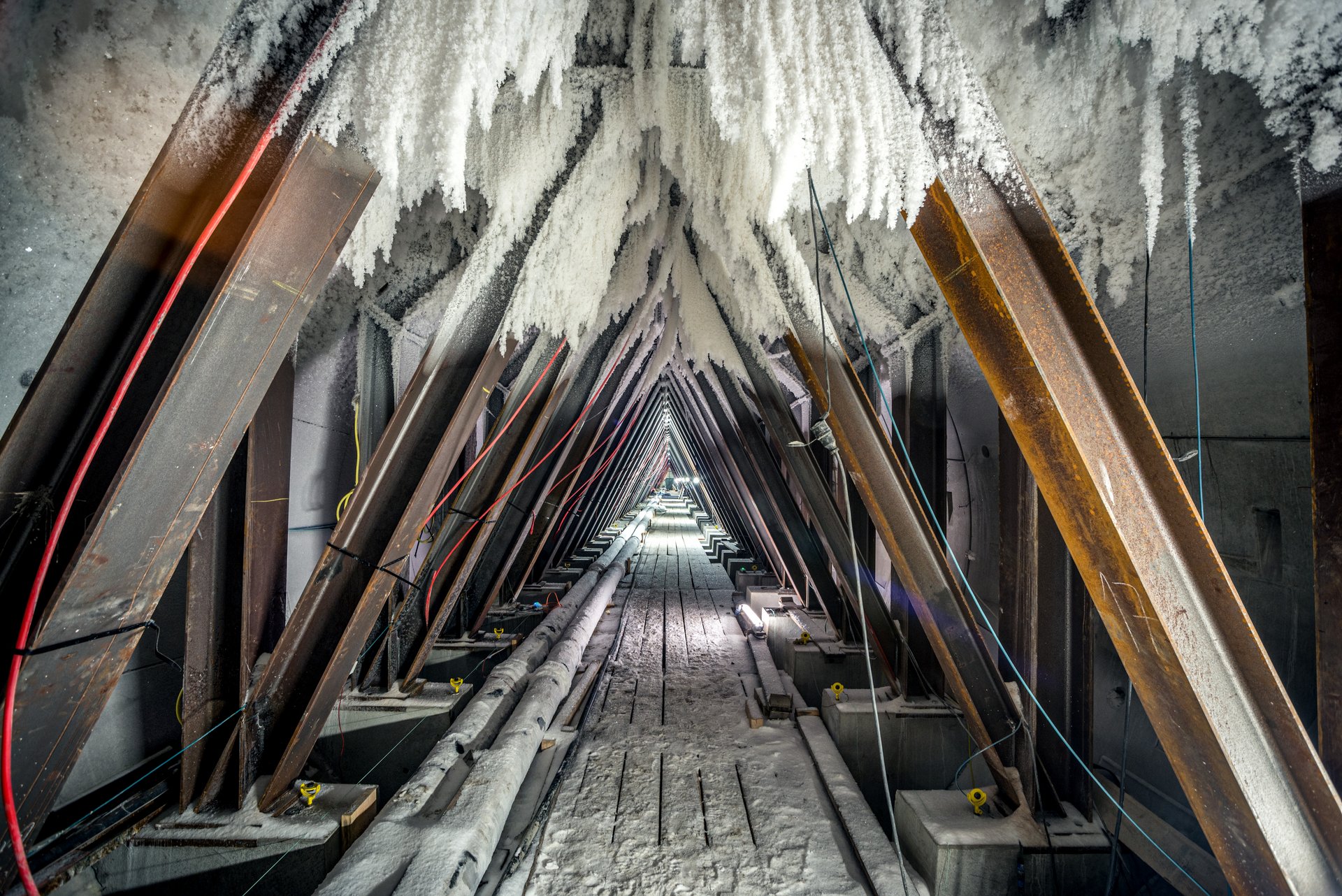
The biggest city-centre ground-freezing in Europe, right in the middle of Berlin and 20 m below the Spree Canal
Experience meets specialist skills
Complex and difficult infrastructure projects are our speciality. After all, we have over a century of experience in civil engineering and an impressive track record to match, with projects including the Gotthard Base Tunnel, currently the world’s longest rail tunnel at 57 kilometres. The main technical challenge on that job was the variety of different rock layers on the route, from hard granite to crumbly sediments, which meant that some tunnelling had to be done with tunnel-boring machines and some using conventional drilling and blasting. More than 400 Implenia employees were working on the various sections at peak times; a total of 28.2 million tonnes of excavated material was taken away from the tunnel.
Christian Späth, Head Division Civil Engineering: “We don’t just offer conventional and mechanical tunnelling to a very high level; we cover the whole portfolio of services needed to carry out complex civil engineering jobs. Sometimes we’ll need to dewater and stabilise rock formations by injecting cement or resin, and sometimes we’ll do what we did with the U5 in Berlin and freeze the ground. There’s almost nothing we can’t do when it comes to tunnelling, special foundations and civil engineering. That’s what distinguishes us from our competitors.” Every civil engineering project is unique and brings its own technical and logistical challenges. Things always need to be thought about and planned from scratch – if only because the geological conditions are never the same.

“We don’t just offer conventional and mechanical tunnelling to a very high level; we cover the whole portfolio of services needed to carry out complex civil engineering jobs.”
Christian Späth
Head Division Civil Engineering
Technical Design Office
Implenia also runs its own Technical Design Office, staffed by highly qualified specialists who calculate all the preparatory measures required and help with their implementation. With most projects requiring close cooperation between tunnelling, special foundations and civil engineering teams, the office plays a vital role. This is very evident on the work being done to extend the 380-kV diagonal power line, a high-voltage cable that runs beneath Berlin city centre. Implenia was brought in to build a seven kilometre-long tunnel with four shafts by 2028. The new line replaces the existing underground piping that was laid in the 1970s and will guarantee that the capital can continue to enjoy a reliable, environmentally friendly and economical power supply in future. Christian Späth: “The key thing with complex infrastructure projects like this is to ensure the smooth interplay of all the different skills required. Implenia can offer the customer everything from a single source.”
The customer is the one that decides what is to be designed and built and how the project should be carried out. And in civil engineering the customer is often a public sector body: a municipality or city, a canton, a Bundesland or a national government. “Increasingly, optimisations are requested as early as in the tendering phase. With our comprehensive set of capabilities, especially in design, we have a real advantage here,” says Christian Späth. “In order to exploit this advantage even more in the future, we want to start cooperating with our customers as partners during the preparatory phase of the project. Then we can put our heads together very early on to decide on the best technical approach to take.” The Vårberg Tunnel project for Swedish customer Trafikverket is the first ECI (early contractor involvement) project where Implenia’s specialists have helped decide on the design, preparation and construction methods. This cooperation with the customer went so well that Implenia was then awarded the contract to implement the project. It was also asked to take the commercial lead on the ARGE A7 Altona Tunnel construction project in Hamburg on the back of the commitment and expertise it showed in the bidding process. Christian Späth: “By identifying several optimisation opportunities we were able to reduce project risks significantly for all concerned – a good basis for our work together over the next eight years.”
Take advantage of digitalization
Implenia uses digitalization to design processes more efficiently and, by using BIM for example, to accelerate the design of complex infrastructure projects. Digital design also brings many advantages for the various specialist trades – rail technology or road-building teams, for example – that come in once the tunnel has been completed. The fact that interfaces have been coordinated right from the start and potential conflicts removed helps them enormously. And Lean? “Tunnelling is Lean by nature: the goal has always been to work as efficiently as possible because the physical space is usually so tight and all the processes have to be optimally harmonised with each other,” says Christian Späth. “We’re currently working on integrating suitable Lean approaches into our special foundations and engineering work as well.” Implenia will also carry out all major projects in Division Civil Engineering with Lean methods in order to make things even more efficient.
The ability to design, coordinate and control processes is becoming more and more important, especially with inner-city projects where there are strict regulations on clean air and noise pollution. Christian Späth: “This is another area where we have many years of experience, which really helps on projects like the extension of the Munich S-Bahn’s Second Main Line. We’re working here in a tight space right in the middle of the city, and the special foundations team has to excavate the construction pit before we can start tunnelling. It requires a lot of organisational expertise.” It’s only natural, then, that Implenia has been working for a long time to develop innovative logistics solutions that will help it meet customer requirements even more effectively in future.
Current Implenia Civil Engineering infrastructure projects (selection)
- Semmering Base Tunnel in Styria, Austria (2013-2023)
- Albvorland Tunnel in Wendlingen, Germany (2016-2021)
- Diagonal power line in Berlin, Germany (2019-2028)
- Tunnel de Bertholod in Lutry, France (2018-2021)
- Railway expansion and station in Liestal, Switzerland (2019-2025)
- Extension of metro line 11 in Paris (2015-2020)
- Expansion of metro line 17 in Paris (2018-2023)
- Vårberg Tunnel, Sweden (2019-2024)
- Expansion of Marienhof S-Bahn railway station in Munich, Germany (2018-2028)
- Twin-track Sandbukta-Moss-Såstad railway line in Norway (2019-2025)
- ARGE A7 Altona Tunnel in Hamburg, Germany (2021-2029)
- Modernisation of Waldenburgerbahn railway, Basel-Land (2020-2023)
- U81 Düsseldorf, Germany (2020-2023)
- Gotthard northern safety shaft (2021-2022)

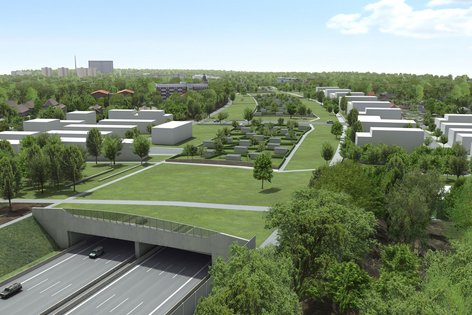
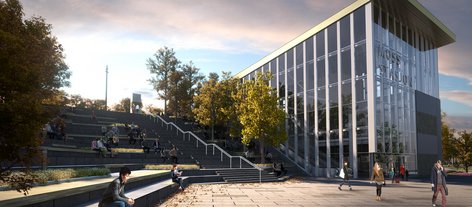
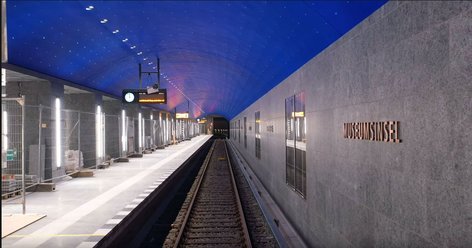

![[Translate to en-CH:] [Translate to en-CH:]](/fileadmin/_processed_/4/8/csm_IMP_GB2020_Green_Village__Genf_High_Res_3186_spa_161f9882a1.jpg)
![[Translate to en-CH:] [Translate to en-CH:]](/fileadmin/_processed_/7/5/csm_IMP_GB2020_Winterthur-Lokstadt-1570-1_spa_1ffc5e7905.jpg)
![[Translate to en-CH:] [Translate to en-CH:]](/fileadmin/_processed_/1/3/csm_IMP_GB2020_KIM_Winterthur_High_Res_3683_spa_9a742a5478.jpg)
